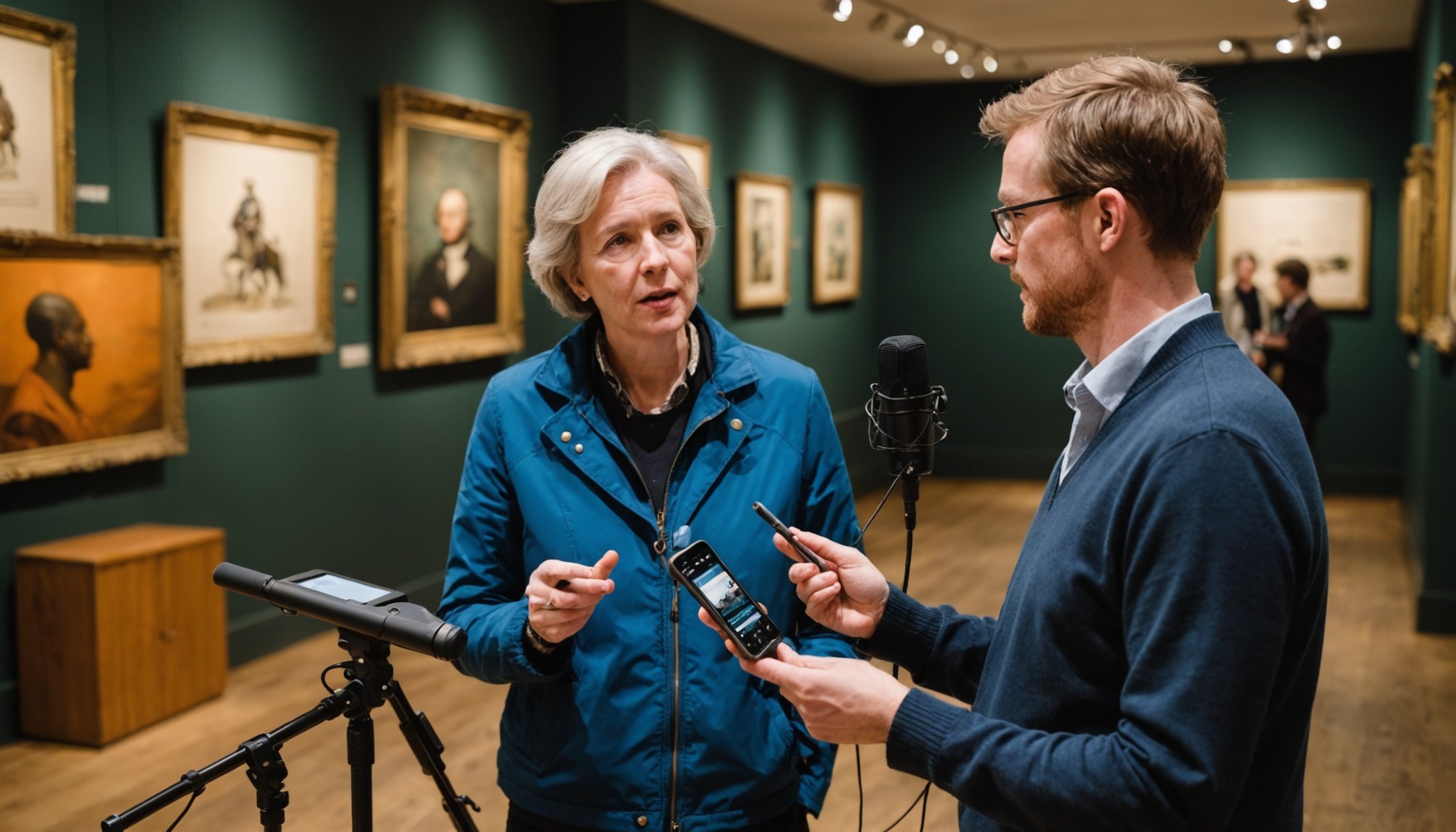Innovative Podcast Techniques in Museums
Museums are increasingly harnessing podcast techniques to enhance engagement and provide a dynamic visitor experience. These techniques leverage the power of audio storytelling to bring exhibits to life in a compelling and accessible way. Currently, many museums are moving beyond traditional narrations to immersive audio storytelling that captivates and informs listeners simultaneously.
The incorporation of storytelling in podcasts allows museums to offer richer, more detailed insights into their collections. This museum engagement strategy not only attracts a wider audience but also deepens the visitors’ connection to the material. By carefully crafting narratives that weave historical facts with intriguing stories, museums create an emotional link with their audience.
Topic to read : Revolutionizing oil company operations with vallourec solutions
Several UK museums have embraced audio storytelling with successful initiatives. For example, some have developed podcasts that explore personal stories behind artefacts, giving history a human touch. Others offer guided audio tours that transform the museum visit into an engaging auditory journey.
Innovative podcast techniques are becoming essential tools for museums. By integrating technology with creativity, museums can present their collections in fresh, exciting ways, making history more relatable and engaging for all visitors.
Also to read : Transforming Shopper Security: Cutting-Edge Contactless Retail Solutions for UK Stores
## Strategies for Audience Engagement
Engaging museum visitors through **podcasts** involves clever strategies and the use of modern platforms. To boost **audience interaction**, museums can utilise social media channels and community forums. Encouraging discussions and gathering feedback on podcast episodes can significantly enhance **museum communication** by making visitors feel like active participants.
Tailoring content to meet the needs of diverse visitor demographics is crucial. Understanding and segmenting audiences based on age, interest, and cultural background allows for crafting content that is not only inclusive but also enriching. Interactive elements such as Q&A sessions or encouraging listener stories help build a deeper connection with audiences.
Museums can adopt innovative techniques such as live podcast recordings or integrating audience polls to increase real-time interaction. This not only keeps the content dynamic but also elevates **visitor engagement** by making listeners' opinions and perspectives part of the narrative. Innovative communication strategies are essential for turning passive listeners into active contributors to museum storytelling.
Technology Integration in Podcasting
Integrating podcast technology into museums can enhance audio storytelling experiences. For effective podcasting, selecting the right audio equipment is crucial. High-quality microphones are essential for clear sound, while portable recording devices offer flexibility to capture live recordings. Editing software enables seamless production, blending interviews, music, and sound effects into captivating narratives.
Embedding podcasts into museum infrastructure involves digital platforms that are easily accessible to visitors. Creating app-based guides or integration within the museum’s website ensures content is available on-demand, catering to various audience preferences. This approach increases visitor engagement by providing engaging, informative content directly in listeners’ hands.
Looking ahead, technological advancements like AR and VR are set to revolutionise podcasting. By providing immersive experiences, these technologies can create interactive audio-visual storytelling that captivates museum visitors. For instance, AR-enhanced audio guides can allow visitors to experience historical events more vividly, while VR can transport them into past eras. These digital innovations not only make museum content more relatable but also offer unique opportunities for audience interaction and more enriching visitor experiences.
Curating Content for Museum Podcasts
Crafting engaging podcast themes is vital for captivating listeners. The balance between education and entertainment is key; museums should aim to inform while keeping the audience intrigued. Consider breaking content into series that delve deeply into specific subjects, offering listeners a comprehensive exploration over multiple episodes. Educational content remains at the forefront, with museums frequently collaborating with historians and curators to ensure accuracy and depth. Inviting guest speakers or experts can bring fresh perspectives and enhance authoritative content creation.
While curating content, museums should align with visitor demographics, tailoring themes to age, cultural interest, and educational levels. This personalization makes the content more relatable and accessible. Museums can also experiment with interactive elements like quizzes or challenges linked to podcast episodes, encouraging deeper audience participation.
The selection process should focus on storytelling that gives voice to underrepresented communities or lesser-known histories, enriching the museum’s narrative. Including diverse viewpoints fosters inclusivity and broadens visitors’ horizons. By thoughtfully designing podcast content, museums can engage audiences globally, extending their reach beyond physical boundaries while ensuring each episode is an educational yet enjoyable journey.
Effective Storytelling Techniques
Implementing effective storytelling methods is crucial in developing an engaging museum podcast. By focusing on strong narrative development, museums can captivate listeners and forge deep emotional connections. A compelling podcast narrative often starts by establishing a clear and relatable theme. This could involve exploring a historical event from multiple perspectives, showcasing the voices of those who lived it.
Creative writing plays a pivotal role in engaging storytelling. Museums can use vivid language to paint mental images, making the content more engaging and memorable. Incorporating suspense, emotion, and conflict helps in creating an immersive experience. Telling stories that are unexpected or lesser-known can also pique curiosity and hold the audience’s attention.
Case studies of successful storytelling styles can serve as valuable inspirations. For instance, using character-driven approaches allows listeners to follow a journey, experiencing history through personal anecdotes. This technique has proven effective in many museum podcasts, where the fusion of factual content with personal stories brings history to life. By honing these storytelling techniques, museums can ensure their podcasts not only educate but also retain their audience’s interest.
Gathering Visitor Feedback and Measuring Success
Collecting visitor feedback is vital for understanding how podcasts resonate with the audience. Museums can use surveys, comment sections, and direct interactions on social media to gauge listener preferences and satisfaction. This feedback not only helps evaluate podcast success but also provides insights to improve content and delivery.
Success metrics such as download numbers, listener retention rates, and engagement on social media platforms offer quantitative data to measure a podcast’s impact. Monitoring these indicators helps museums assess their reach and effectiveness in engaging audiences through audio content.
Analyzing visitor insights collected through these methods can guide museums in refining their podcast strategies. By incorporating listener feedback, museums can continually adapt their storytelling techniques and content focus, ensuring that the podcasts remain relevant and engaging for diverse audiences. This ongoing evaluation and adjustment process helps museums maintain a dynamic interaction with listeners and contributes to the overall success of their podcast initiatives.











